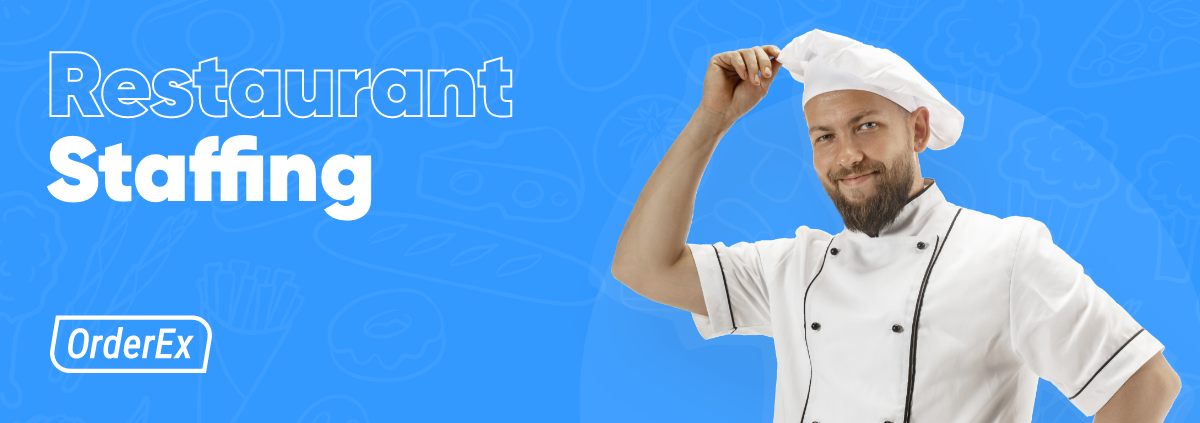An Innovative Solution for Today’s Restaurant Staffing Problems
The restaurant industry has been hit especially hard by the effects of COVID-19 and has faced many problems because of it. Which is why, for months now, restaurants have been anxiously waiting for the green light that lets them begin returning to pre-pandemic operations.
With recent regulatory changes across the country, many expected the restaurant industry to quickly bounce back to business as usual. Unfortunately, it hasn’t been that simple. Despite updates to mask mandates, the wide availability of vaccines, and loosening of occupancy restrictions, those in the food and beverage space continue to face challenges brought on by COVID-19.
One of the biggest concerns involves restaurant staffing. A staggering number of independently owned restaurants are struggling to hire the volume of employees required to support their day-to-day operations.
Why is Restaurant Staffing So Difficult?
The possible reasons for the restaurant staff shortage are numerous. However, there are a few specific factors at play which most experts agree are having a significant impact on the ability to find and retain quality employees in the F&B industry.
1. Other Industries Snatched Them Up
While restaurants were cutting staff due to low demand, other businesses like online retailers, shipping companies, and grocery stores weren’t just thriving, they were growing. It is no surprise that many former restaurant workers wound up finding employment in these and other industries for the better part of 2020.
While many may have intended to head back to their restaurant jobs as soon as possible, after a year of simpler schedules, consistent paychecks, health benefits, and paid time off, transitioning back into F&B might not seem quite so appealing anymore.
2. Demand is High for Restaurant Staffing
In addition to fewer employees interested in working restaurant jobs these days, nearly everyone is rehiring restaurant workers at the exact same time. Recruiting for restaurants has never been more difficult because there are so many job opportunities in the food service industry. There simply aren’t enough qualified restaurant workers to go around.

3. Employees Can Be Choosey
It’s the nature of economics. When demand is up and supply is down, costs increase. In this case we’re referring to the cost of labor in restaurants. It’s no surprise that hiring restaurant employees is easiest when competitive wages are an option. This is a big bummer for independently owned restaurants that were already operating with pretty slim profit margins, pre-COVID. These restaurants must offer more to employees to maintain a team of the same quality they had last year. Some simply can’t swing it.
4. Unemployment Benefits Aren’t Too Shabby
It can be difficult to find where to hire restaurant staff, as many employees are slow to return to the industry for the sake of their own comfort and safety. The restaurant space is still a bit scary to some people, since even unvaccinated patrons can’t wear masks while dining. This is likely contributing to an overall sense of unease about returning to work in restaurants, and unemployment benefits are available until employees are vaccinated and comfortable going back to work.
5. The Number of Diners is Increasing Exponentially
The demand for in-person dining is increasing so quickly that even if managers knew how to get staff for restaurants, they still wouldn’t be able to keep up. Most restaurants are seeing significant increases in patronage on a weekly basis. There’s just not enough time to get new employees up to speed and meet that demand.
What Does This Mean for Restaurants?
The effects of this labor shortage are far reaching. First and foremost, it is increasingly difficult to meet customer expectations and renewed demand for indoor dining. In order to provide the level of service expected, restaurants continue to cap the number of seats available, which limits revenue. Furthermore, the staff that is working still needs time off, so some restaurants are forced to close even when there’s a demand for dining.
Restaurant staffing challenges are more pronounced in kitchens than front-of-house. Even if the manpower requirements for restaurants’ front of house operations are met, those servers are faced with increased strain and stress due to the worker shortage in the back. This leads to unhappy customers, which leads to poor tips, which makes it even more difficult to retain quality talent. In short, the lack of manpower solutions creates a vicious cycle causing major problems in the food service industry.
Innovative Solutions to an Unexpected Challenge
If there’s a silver lining to the number of restaurant problems which surfaced over the past year, it’s that in the absence of the typical hustle and bustle, owners and managers had time to pinpoint opportunities for improvement and identify solutions. Innovative strategies for employee shortages may not have been a top priority going into 2021, but halfway through the year, they’re nearly all anyone in the industry can talk about.
OrderEx
Like many jobs with a shortage of workers, those in the restaurant world have come up with some creative solutions to help manage the current food service staffing issues.
One such solution is OrderEx, an app used by the diners themselves, which aims to help restaurants maximize revenue before they are fully staffed. Many of the typical server-diner touch points are eliminated when OrderEx is used, significantly reducing the amount of work required by front-of-house employees.
Guests use their smartphone to place an order, which makes its way to the kitchen without the need for a server to visit the table. Once the order is up, a server brings it to the table just like normal. If diners need assistance from their server in the meantime, there is a “call server” button right in the app. Finally, when they’re ready customers can easily pay from their phone and go.
OrderEx lessens restaurant staffing concerns by decreasing the amount of stress – both physical and mental – experienced by servers each day. Additionally, this innovative solution yields faster turnaround which can equate to an increase in tips. Less stress and more money will make for much happier employees, and in the end help restaurants retain talent as the industry returns to business as usual.
contributed by Melissa Lucas, senior staff writer

